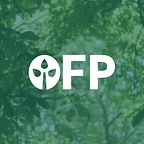Open Forest Protocol Validators 101
Climate change is a global challenge, so tackling it requires a concerted global approach and effort. Doing so effectively would entail approaching the monitoring of our ecosystems in a synchronous manner. This would involve using a system that ensures a robust and globally standardized Measurement, Reporting, and Verification (MRV) system. The use of MRV technology that tracks and monitors data in an immutable and openly accessible way will not only build trust between economies and countries, but will also allow us to cohesively make informed choices that impact our global environment and society for the better.
“Measurement, reporting and verification (MRV) is foundational to our global response to climate change.” — MRV Technical Paper, Low Emission Capacity Building Programme (LECB), United Nations Development Programme.
Forest Measurement and data Reporting is conducted independently by Project Operators, who are instructed to follow a formalized methodology. The last and most vital step in the MRV process is Verification — this involves the procedures and review processes that validate the accuracy and quality of the data reported by Project Operators. Quality data validation is like a badge of trust that ensures credibility, and allows for comparability. Verification is conducted by a group of validators, who rigorously analyze the precision and authenticity of the reported data.
For traditional, voluntary carbon markets, the verification goes through validation and verification bodies (VVBs). VVBs are accredited third-party members that fact-check reported data and subsequent carbon sequestration and emission reports submitted by carbon credit-producing projects and organizations. These VVBs are connected to, and governed by, a centralized body that capacitates them. The centralized authority must assign one or multiple VVBs to every verification request for which they are instructed to validate. This centralized process is time-consuming and expensive. The financial demands of the process make it difficult if not impossible for smaller projects to go through MRV, and as a result, they cannot have access to carbon credits.
The OFP way: Remote, Reliable, Decentralized, and Scalable
OFP considered the need to reduce the financial cost of verification and leverage new technology to increase the validity and accessibility of MRV. We designed an innovative, transparent, and far more scalable MRV method — one that is more inclusive and accessible to small and medium-sized reforestation/afforestation projects and provides a very high level of reliability and trust for each carbon credit created.
We cut the VVB to just V for Validators.
OFP validators are forestry and environment-focused organizations that ensure the legitimacy and accuracy of data reported by Project Operators. This diverse network is composed of remote sensing companies, environmental NGOs, forestry consulting companies, universities, and research groups, all pooling their extensive knowledge and experience. It’s important to point out that OFP validators are different from blockchain validators as they are not running a node but manually reviewing project data.
We have evolved validation beyond traditional concepts.The OFP validator method is more affordable, and accessible due to the following innovations:
Remote: Our validators are remote, which significantly cuts down financial costs, and eliminates the counterproductive carbon-emitting requirement of global travel to and from each of the projects for in-person on-the-ground validation. Our validators have access to remote sensing data such as satellite imagery and LiDAR that makes the verification process even more reliable and streamlined. Utilizing NEAR’s blockchain technology allows this to become a decentralized validator assignment process.
Reliable: Rather than having one validator review and assess project data, we have multiple validators independently making this assessment. This eliminates the issue of validator bias, which is common in traditional VVB. A diverse pool of expertise and experience validating a project’s data reduces the chance of partiality, increasing the objectivity and trust of the stored data.
Decentralized: Traditional carbon markets are centralized, meaning that all decisions must run through a governing body before being approved to ensure the job is getting done accurately and thoroughly. A decentralized network accomplishes the same goal, but is able to avoid the bottleneck of centralized approval. OFP is built on the NEAR blockchain, ensuring that our validation process is fast, thorough, and scalable. Multiple validators can simultaneously verify a project, enabled by a technology known as “Sharding”. In addition, the NEAR blockchain allows the validator network to leverage prediction markets, serving as an extra layer of decentralized collective decision-making by validators.
Why should you be an OFP validator?
- OFP validators are incentivized to find errors and validate data inputs.
- Validators who join our ecosystem early receive a bonus in the form of OPN tokens. Those tokens can yield a small percentage of all carbon credits created on OFP.
- The manual work required for each validation is done entirely remotely
- OFP validators will be directly contributing to the security of the OFP network, and in doing so, will be integral in this fight against climate change.
How to become an OFP validator
Becoming an OFP validator is a streamlined process that requires only that you fill out a concise validator form and let the team get back to you.
